Polarized lenses are not all the same. I show you the difference between high and low quality lenses.
There are things I do to stretch my dollar. I use free launches, avoid live bait and apply monofilament backing to fill part of the spool I don't use when casting.
I can make a dollar scream if it means fueling my fishing addiction!
But some things I do not skimp on. One of those things would be polarized sunglasses.
Note Before I get started I need to point out that I'm not pushing any one brand. I'm just showing you one way I discern a good polarized lens.
Some people get a free pair of sunglasses and all the sudden become very passionate for that brand.
That's why I photoshopped the logos out in these pictures.
Knowledge is more important than gear, and being honest goes further than brand-standing.
How I Identify a Good Polarized Lens
In order to understand the method, one must understand how polarized lenses work.
What is a Polarized Lens?
A polarized lens is more than a tinted lens. It is a special lens that reduces glare seen on horizontal surfaces, like roads and water.
It's an easy name. Polarized lenses are not really "polarized". They are filters that only let in one kind of light, depending on their orientation.
Light waves travel in different orientations: vertically, horizontally and everything in between .
Our naked eyes perceives vertically polarized light as glare.
Glare hurts our eyes and keeps us from seeing fish.
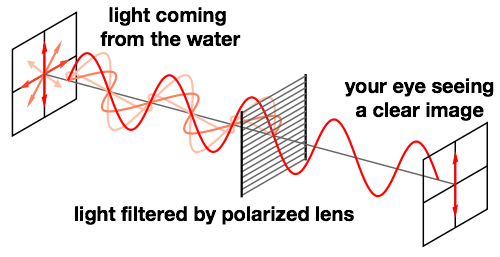
This diagram shows a "polarized lens" letting in vertically polarized light. This is opposite of what our sunglasses do, I'm just using this visual aid to help you better understand the concept.
"Polarized" lenses filter this unorganized light, and glare, by only letting in one kind. Glare is removed and we can see underwater when sight fishing.
How Polarized Lenses Are Made
I'm going to keep this simple:
There is a special film applied to sunglass lenses. This film contains a chemical compound made up of molecules that align in rows, like blinds on a window.
This creates a microscopic filter blocking light waves oriented in the same direction.
These filters are not made equally. A poor manufacturing process can cause scattered alignment on the filtering film.
If molecules of the film are not aligned evenly, they will not reduce glare evenly.
Simple Test for Polarized Lenses
It stand to reason a good polarized lens will evenly block all vertical light.
So what happens when we look through two polarized lenses, oriented evenly with one another?
Well, since the filters are aligned with each other, they should let light pass through.
High Quality Polarized Lenses
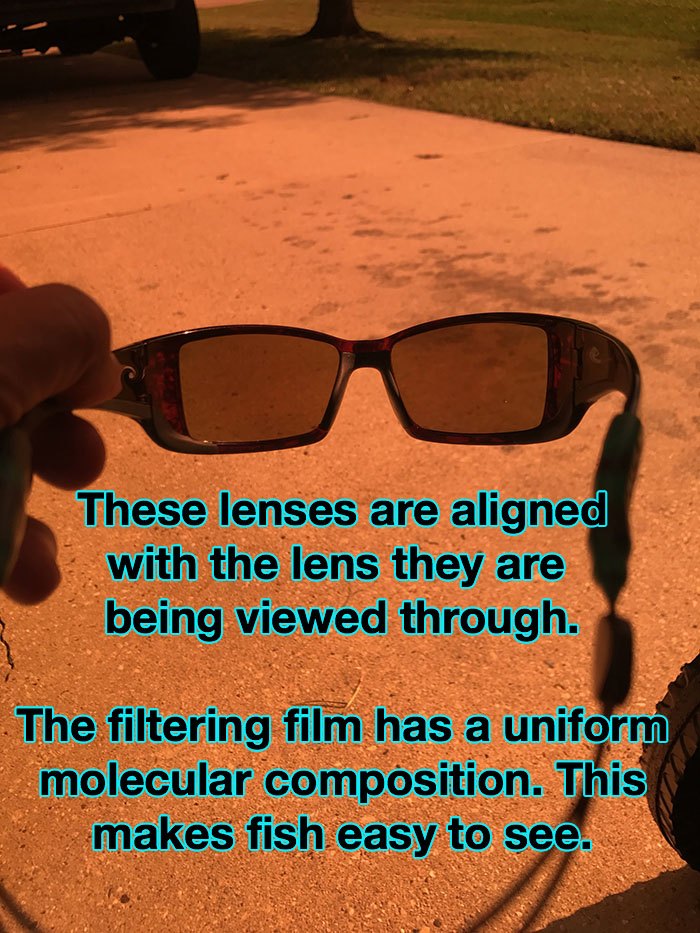
And when we turn one lens 90 degrees, we see a complete blackout.
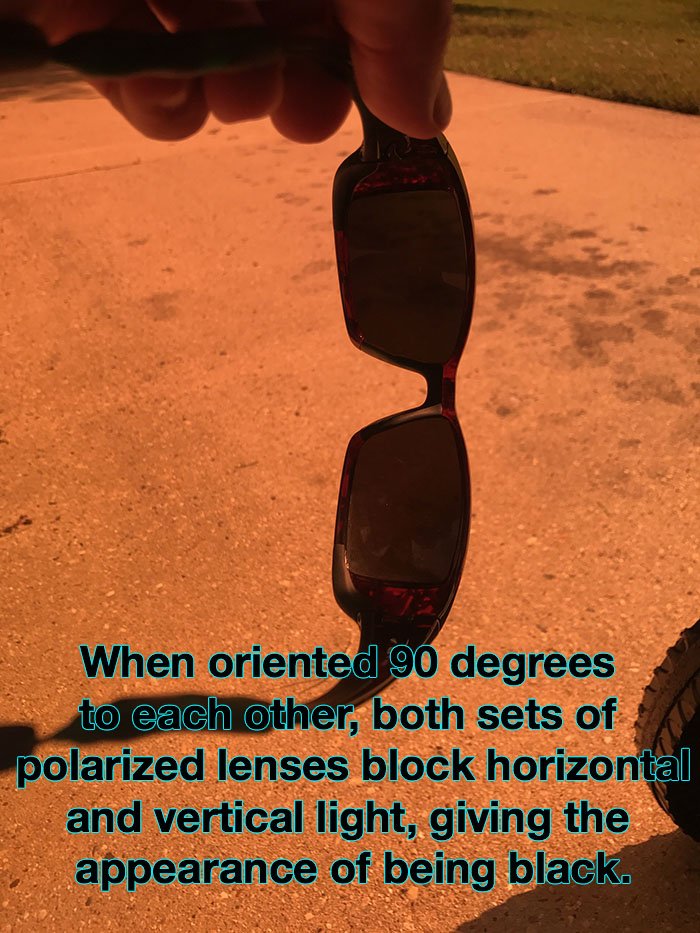
These sunglasses set the standard. Now we know what a good polarized lens looks like!
Low Quality Polarized Lenses
Let's do the same for a pair of low quality polarized sunglasses.
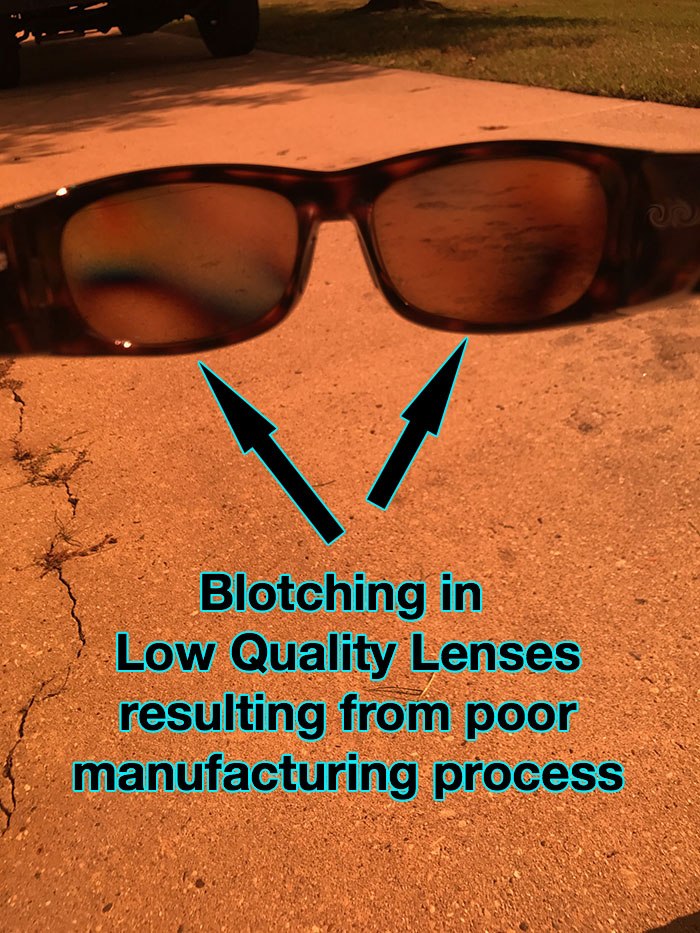
It's pretty obvious these lenses are not filtering all vertical light.
Now let's try turning the low quality polarized sunglasses 90 degrees.
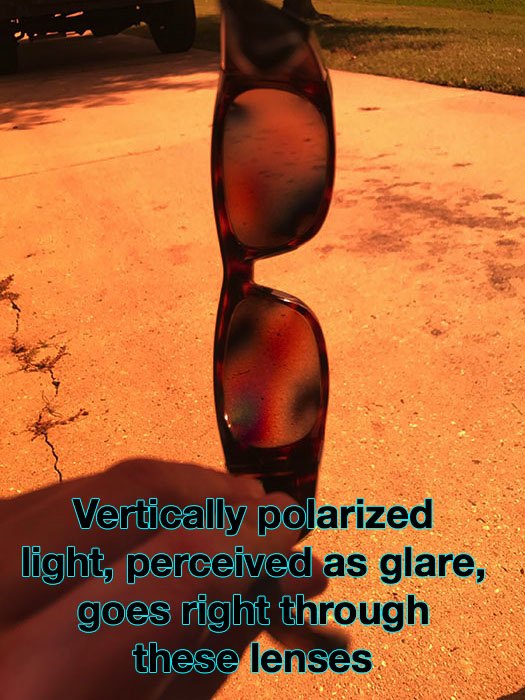
It's the exact same thing, except the blotching is reversed.
Honestly, I didn't need this test to know these sunglasses are garbage. I knew it as soon as I saw the frames.
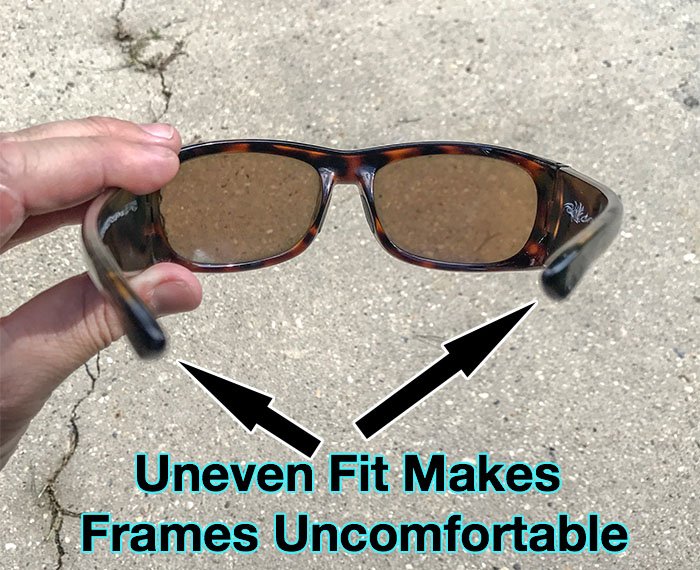
Conclusion
I don't care what name brand my gear is. I care about how it performs.
I confirm this by putting time in on the water using that gear, and prove it to others by showing them something measurable and obvious.
When you wear low quality sunglasses you stand to miss fish and damage your eyes.
I advise you take time to find a good pair of comfortable frames and high quality lenses that enhance your fishing and protect your eyes.

Thanks Daniel, I’m glad you found it. I’m not sure if you’re into inshore fishing or not, but if so, then there’s a lot more here you’ll find useful. Thank for you visiting and taking time to comment!
I came across this article via a google search for “poorly polarized lenses” because i had suspicions that my very expensive sunglasses had sh*t lenses. Thank you for confirming!
That’s awesome. Thanks for commenting.
Nice article. High quality polarized lens filter more glare and don’t distort vision. This is true. But there is an error as follows. You wrote, “There is a special film applied to sunglass lenses. This film contains a chemical compound made up of molecules that align in rows, like blinds on a window.” There is no special film applied to the lenses and the film does not contain a chemical compound made up of molecules that align in rows. High quality polarized lenses are made by heating and stretching a soft PVA material to form long chain molecules, causing them to align in one direction. This polarized sheet is then laminated between two high quality lenses.
Sometimes, yes. I know some electronics are made to compatibly with polarized lenses, but that’s all I can tell you.
Meanwhile, a simple workaround is to remove the sunglasses :)
Hey Devin,
Do you have issues reading fish finders or other lcd based electronics with polarized lenses?
Thanks
I agree and thanks for reading!
Hi
Very good article but in my opinion it has fallen short with Costa fishing glasses, because the fact that they have a lens color for each fishing specialty makes them unique. And I have tried the Serengeti but as fishing glasses there is no other better than the Costa del Mar for its 580 nano technology.
Cheers
Hey Sharin, I haven’t fished with either so I really couldn’t tell you. I have heard good things, however.
How about Maui Jim or ray ban ?
Thank you
That’s a great question, Keith.
This blog post breaks it all down exactly: https://www.lafishblog.com/spooling-braid-like-this-improves-casting-performance/
What does monofilament backing on a spool do for the cast?
Never heard of them, but thank you for the suggestion. Maybe one day I will check them out.
RCI Optics
Costa del Mar and Smith Optics. Glass lenses only.
Thanks for commenting!
Can u give a short list of good brands?
Sorry to hear about your experience, David. Thanks for sharing, but I hope you’re able to get squared away with something that’s good for you.
Just received polarized sunglasses from zenni optical–very poor, splotchy polarization, don’t pay for that option from zenni!
Crazy what you see when you actually test. Thanks for commenting.
Used your method to check polarization. Surprised that my calcutta’s were blotchy (was never impressed with the polarization when fishing). My walmart discount sunglasses were way better
No, because your binocular vision will be hindered, because your eyes won’t see the same image and this can hamper your casting.
Hi, I need to know is it necessary to have the polarisation axis of both the lenses in a same pair of sunglasses same? can the left lens have an axis at 60 degree and the right lens have an axis at 120 degree?